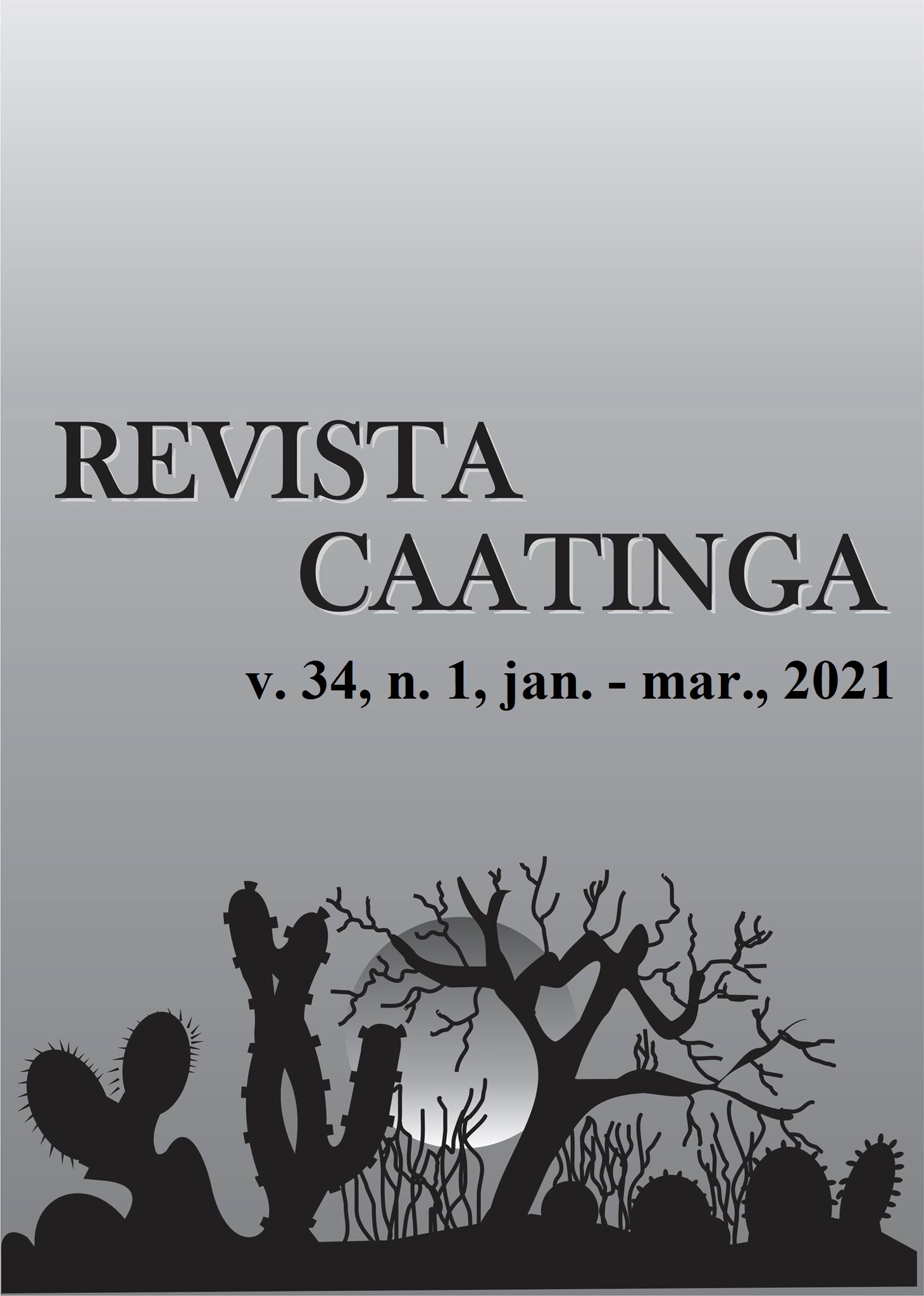ELICITORES DE RESISTÊNCIA NO DESEMPENHO DE PRODUÇÃO E PÓS-PRODUÇÃO DE LISIANTHUS EM VASO
DOI:
https://doi.org/10.1590/1983-21252021v34n104rcPalavras-chave:
Eustoma grandiflorum (Raf.) shinn. Planta ornamental. Qualidade. Indução de resistência. Viabilidade de flores em vaso.Resumo
O lisianthus é uma importante espécie ornamental, cujo cultivo em vaso ainda requer estudos, principalmente quanto ao emprego de manejo alternativo. Assim, o objetivo deste trabalho foi avaliar a influência de elicitores de resistência na produção e na qualidade pós-produção de lisianthus em vaso. Plantas de lisianthus cultivadas em vaso foram tratadas com dois elicitores: (E1) manano-oligossacarideo fosforilado e (E2) bioflavonóides e fitoalexinas cítricas, nas doses (D) de 1 e 2μL.L-1 (E1D1 1 μL.L-1, E1D2 2 μL.L-1, E2D1 1 μL.L-1, E2D2 2 μL.L-1 e controle), com 5 repetições, em delineamento inteiramente casualizado. Após a abertura dos primeiros botões florais, as plantas permaneceram na estufa durante 15 dias, até atingirem pelo menos 3 flores abertas, quando foram transferidas para a condição ambiente (24 ±2 oC e 72 ±2%) durante mais 15 dias A aplicação dos elicitores não influenciou o ciclo da cultura nem o tamanho da haste. Entretanto, observou-se aumento nos números de botões e de flores abertas viáveis, além de aumento dos dias de vida útil, paralelo à redução de flores senescentes em relação ao controle. A dose de 2μL.L-1 de E2 manteve em, pelo menos, mais 5 dias o percentual de flores abertas viáveis com relação ao controle, reduzindo o percentual de flores senescentes. Em conjunto, com a aplicação do elicitor E2 em lisianthus em vaso pode-se prolongar a viabilidade das flores, por manter a qualidade e retardar a senescência e, assim sendo, aumentar o período de comercialização.
Downloads
Referências
AHMAD, H. et al. Evaluation of lisianthus (Eustoma Grandiflorum) lines for commercial production in Bangladesh. International Journal of Business, Social and Scientific Research, 5: 156-167, 2017.
AHMED, K. B. M. et al. Chitosan and its oligosaccharides, a promising option for sustainable crop production- a review. Carbohydrate Polymers, 227: 115331, 2020.
ALENCAR, M. S. R. et al. Induction of defense mechanisms in tomato plants by saprobic fungi filtrates against early blight disease. Revista Caatinga, 33: 671-678, 2020.
ALMEIDA, J. M.; CALABONI, C.; RODRIGUES, P. H. V. Lisianthus cultivation using differentiated light transmission nets. Ornamental Horticulture, 22: 143-146, 2016.
ARANEGA-BOU, P. et al. Priming of plant resistance by natural compounds. Hexanoic acid as a model. Frontiers of Plant Science, 5: 1-12, 2014.
BACKES, F. A. A. L. et. al. Produção de lisianthus cultivado em vasos com diferentes soluções nutritivas e formas de condução. Horticultura Brasileira, 24: 6-10, 2006.
BURKETOVA, L. et al. Bio-based resistance inducers for sustainable plant protection against pathogens. Biotechnology Advances, 33: 994-1004, 2015.
CASTILLO-GONZÁLEZ, A. M; VALDEZ-AGUILAR, L. A; AVITIA-GARCÍA, E. Response of lisianthus (Eustoma grandiflorum [Raf.] Shinn) to applications of growth regulators. Acta Horticulturae, 1263: 241-244, 2019.
CAVASINI, R. et al. Carbohydrate reserves on postharvest of lisianthus cut flowers. Ornamental Horticulture, 24:12-18, 2018.
FERRANTE, A. et al. Post-production physiology and handling of ornamental potted plants. Postharvest Biology and Technology, 100: 99–108, 2015.
GURGEL, L. M. S. et al. Efeito de indutores de resistência no controle da antracnose do bastão do imperador (Etlingera elatior). Anais da Academia Pernambucana de Ciência Agronômica, 13: 223-233, 2018.
HALEVY, A. H.; KOFRANEK, A. M. Evaluation of lisianthus as a new flower crop. HortScience, 19: 845-847, 1984.
LÓPEZ-GUERRERO, A. G. et al. Effect of oligosaccharins on the vase life of lisianthus (Eustoma grandiflorum Raf.) cv. ‘Mariachi blue’. The Journal of Horticultural Science and Biotechnology, 95: 521-529, 2019.
MUBAROK, S.; SUMINAR, E.; KAMALUDDIN, N. N. Ethylene Inhibition Using 1-Methylcyclopropene and Future Perspective for Tropical Ornamental Plants. Asian Journal of Plant Sciences, 18: 1-8, 2019.
NOORDERGRAAF, C.V. Production and marketing of high quality plants. Acta Horticulture, 353: 134–148, 1994.
NOWAK, J.; RUDNICK, R. M. Postharvest handling and storage of cut flowers, florist greens, and potted plants. Oregon: Timber Press. 1990. 210 p.
ÖZKAN, H.; ÖZEN, F. The effect of gibberellic acid (GA3) on post-germination morphometric parameters of lisianthus [Eustoma grandiflorum (Raf.) Shinn.] ‘Mariachi Pure White (F1)’ cultivar. Mugla Journal of Science and Technology, 2: 145-151, 2016.
PALIYATH, G. et al. Postharvest biology and technology of fruits, vegetables, and flowers. New York: John Wiley & Sons, 2009. 498 p.
ROMANAZZI, G. et al. Induced resistance to control postharvest decay of fruits and vegetables. Postharvest Biology and Technology, 122: 82–94, 2016.
SAEEDI, R. et al. Calcium chelated with amino acids improves quality and postharvest life of lisianthus (Eustoma grandiflorum cv. Cinderella Lime). HortScience, 50: 1394-1398, 2015.
SARDINHA, D. H. S. et al. Phytostimulants influence the vase life of Heliconia psittacorum CV. Golden Torch. Postharvest Biology and Technology, 155: 140–148, 2019.
SHEIKH, F. et al. Study on effects of ascorbic acid and citric acid on vase life of cut lisianthus (Eustoma grandiflorum) ‘Mariachi Blue’. Journal of Ornamental Plants, 4: 57-64, 2014.
YAN, J, et al. Complete plastome sequence of Eustoma grandiflorum (Gentianaceae), a popular cut flower. Mitochondrial DNA Part B, 4: 3163-3164, 2019.
Downloads
Publicado
Edição
Seção
Licença
Os Autores que publicam na Revista Caatinga concordam com os seguintes termos:
a) Os Autores mantêm os direitos autorais e concedem à revista o direito de primeira publicação, com o trabalho simultaneamente licenciado sob a Licença Creative Commons do tipo atribuição CC-BY, para todo o conteúdo do periódico, exceto onde estiver identificado, que permite o compartilhamento do trabalho com reconhecimento da autoria e publicação inicial nesta revista, sem fins comerciais.
b) Os Autores têm autorização para distribuição não-exclusiva da versão do trabalho publicada nesta revista (ex.: publicar em repositório institucional ou como capítulo de livro), com reconhecimento de autoria e publicação inicial nesta revista.
c) Os Autores têm permissão e são estimulados a publicar e distribuir seu trabalho online (ex.: em repositórios institucionais ou na sua página pessoal) a qualquer ponto antes ou durante o processo editorial, já que isso pode gerar alterações produtivas, bem como aumentar o impacto e a citação do trabalho publicado (Veja O Efeito do Acesso Livre).







